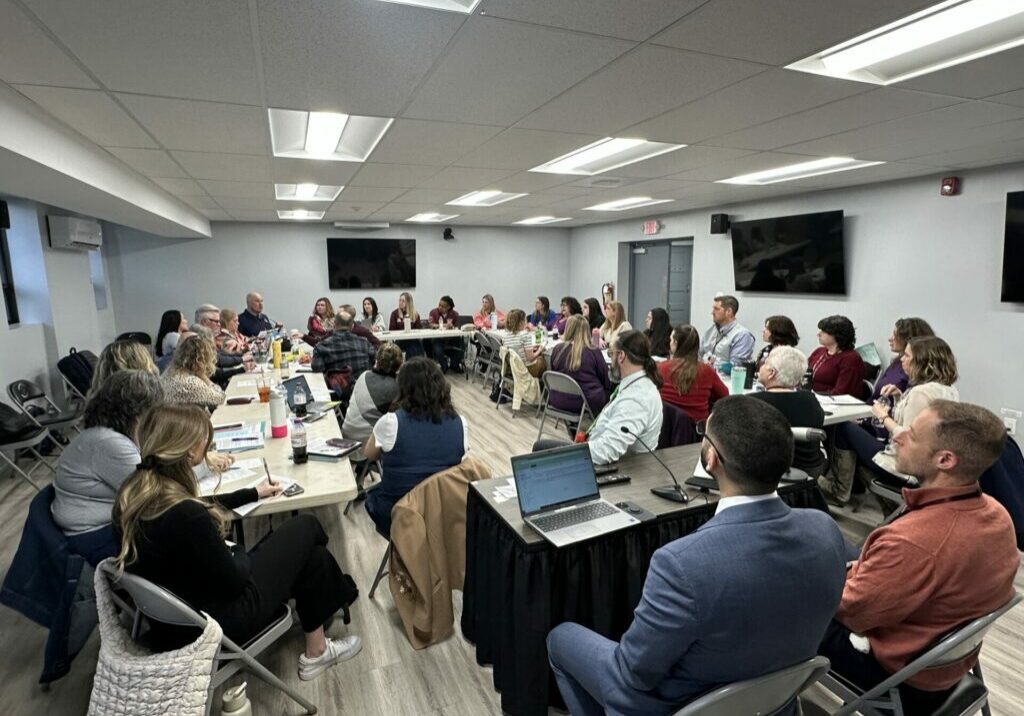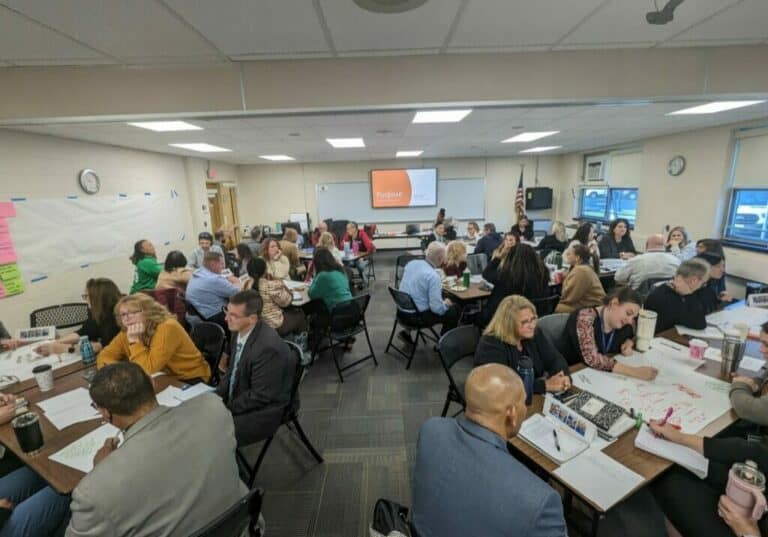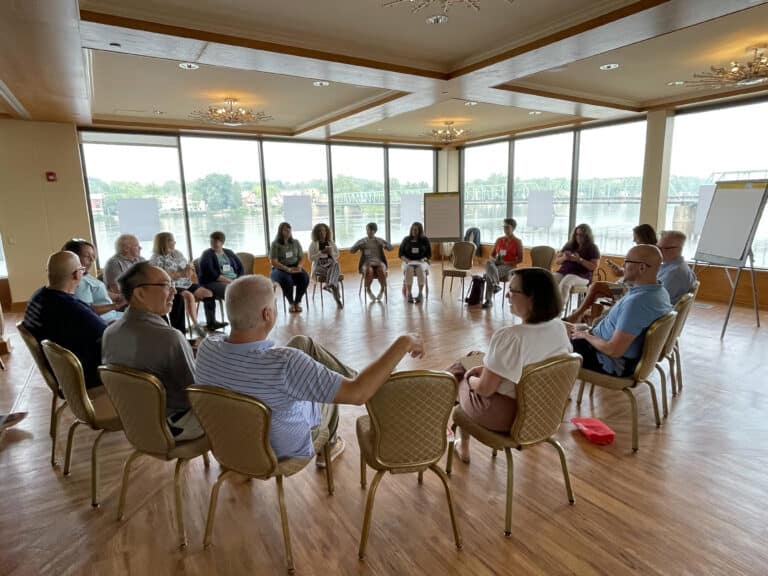By Kimberly Crane
One of the first things Dr. Danny Robertozzi was asked during his interview with the Clifton Board of Education to be the district superintendent was if he had any experience with referenda. It was no secret that school facilities needed an upgrade.
When Robertozzi was hired in July 2019, Clifton Education Association President Lori Lalama gave him a long list of upgrades needed to ensure a safe environment for students and staff. Lalama had become CEA president only a few months before Robertozzi was hired.
“The CEA was very involved in the strategic planning meetings and voiced what we thought were the most important needs to meet the health and safety of each of the 19 buildings,” Lalama says.
School officials agreed on items that needed attention, and Robertozzi wanted to see it in person.
“The first few months on the job there was a lot of walking around with CEA representatives and board of education members looking, listening and learning what the needs were,” Robertozzi says. “The number one thing I heard over and over again was ‘facilities.’”
Strategic planning meetings with the community also identified that HVAC systems, security entrances and equipment, boiler efficiency remediation, an Americans with Disabilities Act (ADA) compliant elevator and bathrooms, and turf field and field house construction would all greatly improve safety and the school environment for students.

Delays provide opportunities to establish LMC structures
In March of 2020, Clifton schools, like most schools across the nation, closed to in-person learning and moved to virtual instruction due to the COVID-19 pandemic.
“The stakeholders had all agreed on the needs,” Lalama says. “Then COVID-19 forced the district to put everything on the back burner.”
While the crisis caused an untimely setback to a planned referendum, it nonetheless provided an opportunity to utilize labor management collaboration (LMC) strategies throughout the district. To take a closer look at the data on LMC outcomes, Lalama and Robertozzi wanted to meet educators and school officials from other districts who were doing this work.
“Lori and I both believe in collaboration and that we could do our best for students and staff if we worked together,” says Robertozzi. “We had started formalizing our collaborative process through workshops at Rutgers University. We went with a team and were encouraged by research that showed you can improve teacher retention by creating an environment where teachers and administrators collaborate.”
At the workshops, they learned that research reveals that districts that follow LMC practices not only solve issues faster but demonstrate increased academic achievement for students.
Finding the silver linings together
Robertozzi believes that having LMC processes in place helped the district get through COVID.
“No one person had all the right answers to manage the pandemic,” Robertozzi says. “Collectively though, we came up with some good ideas that helped reduce its effects.”
Using the LMC model, the district and local association put together a COVID remediation committee of over 100 people to ensure that every group in the school community was represented. A significant portion of that group included CEA members.
“While there were certainly bumps in the road, we had a pretty smooth reopening,” says Robertozzi. “We all sat in the same meetings with the health department and would continually share information. That was the first time we actually used the collaborative meeting structure. If we had not gone to LMC trainings, things may have taken a lot longer to get back on track.”
Stakeholders regroup to for collective efficacy
The HVAC systems that serviced 11,000 students each year, for decades, were in dire need of repair even before the pandemic. The crisis gave more than enough evidence to back up why new heating, ventilation and air conditioning were needed for every instructional space. The referendum initiative included $75 million to meet those upgrade requirements. Parents were on board.
Replacing the HVAC system was a high priority for student safety and health. It was also a security issue. Parents could see the problem when they drove by the school buildings on a hot day. First-floor classroom windows had to be wide open to try to get the kids some air.
Everyone had a role to play and a personal story to tell
Getting the message out to the voting community was the challenge. Everyone needed to hear the same message. The local and district did that by creating a large referendum committee with a significant number of staff members on board. They were the “boots on the ground” talking to parents at dismissal. Everyone was on the same page and had references that they could explain. They could confirm, for example, that some school restrooms really were 100 years old.
About 40% percent of the district’s staff lives in Clifton. CEA members talked to neighbors, put signs in their yards and worked with their union to stay on top of messaging. At the time, Zoom and Google Meet were new ways to get people information.
The district also launched a comprehensive website with data, information and a place where residents and staff could ask a question and get a timely response. The local association and district also put together an ambitious social media campaign and pursued every avenue for sharing information.
Everything was also being discussed by the CEA’s executive team and its representative assembly.
“We fine-tuned the information and spoke about the continued importance to support the referendum,” Lalama says.

Referendum leverages $55 million in state funding
The state of New Jersey will pay for a third of a school district’s referendum cost under certain circumstances. While Clifton’s entire proposal was $168 million, New Jersey was on track to pay $55 million of the cost. This was a positive point for voters, who realized that the laws could change, and upgrades were most likely not going to be cheaper in the future.
“People understood how you improve schools through this process,” says Robertozzi. “With the state kicking in a third of the money, they felt like they were getting something necessary, lasting and important with their tax dollars. ”
The vote passes 2-1
The local and district decided that a stand-alone ballot question was the best option for passing the vote. The focus was on getting parents, staff that lived in town, fellow NJEA members that were residents and all community members that utilize and value the schools to get the vote over the top.
The vote passed by a remarkable 2-1 ratio. Lalama says that everyone was elated and encouraged by the vote. She credits communication and collaboration as the keys to passing the historic referendum for Clifton’s students, and looks forward to maintaining the strong, working relationships between labor and management in the district.
What’s next for the Clifton LMC
Robertozzi reflected on the referendum success and continued LMC partnership in Clifton.
“I think the most powerful thing we are able to do as an LMC is to make sure that we are all at the same table, hearing the same message and sharing out the same information,” says Robertozzi.
“A successful labor management collaborative team envisions a proactive partnership between labor and management, built on mutual respect and shared responsibility, for the benefit of the entire school community,” Lalama adds.
The CEA is and many of Clifton’s stakeholders continue to attend New Jersey Labor Management sponsored workshops, and plan to share what they learn by holding workshops of their own for neighboring districts this year.
Kimberly Crane is an NJEA Communications Consultant and the former president of the Highland Park Education Association. She can be reached at kcrane@njea.org. For more information on the New Jersey Labor Management Collaborative email Mike Ritzius at mritzius@lmcpartnerships.org.
NEA’s Role in the NJ Labor Management Collaborative
The New Jersey Labor Management Collaborative, an initiative dedicated to fostering productive relationships between labor and management in New Jersey’s educational system, thrives through the robust support of the National Education Association (NEA). This partnership exemplifies NEA’s commitment to enhancing educational environments not only in New Jersey but across the nation.
NEA, as part of the National Labor Management Partnership (NLMP), a coalition of the national organizations of the nation’s educators, is cultivating a dynamic ecosystem of support that empowers districts to implement collaborative strategies effectively. Through providing crucial resources, expertise and ongoing consultation, the NLMP nurtures a sense of collective efficacy between labor and management, driving improvements in teaching conditions and student outcomes.
This collaborative approach has shown tangible benefits, leading to more cohesive school communities and a better educational experience for all stakeholders. By backing initiatives like the New Jersey Labor Management Collaborative, NEA demonstrates its dedication to fostering a culture of cooperation and mutual respect within the education sector, paving the way for sustained success and innovation.
For more information about NEA’s role in labor management collaboration, visit nea.org/collaboration.




